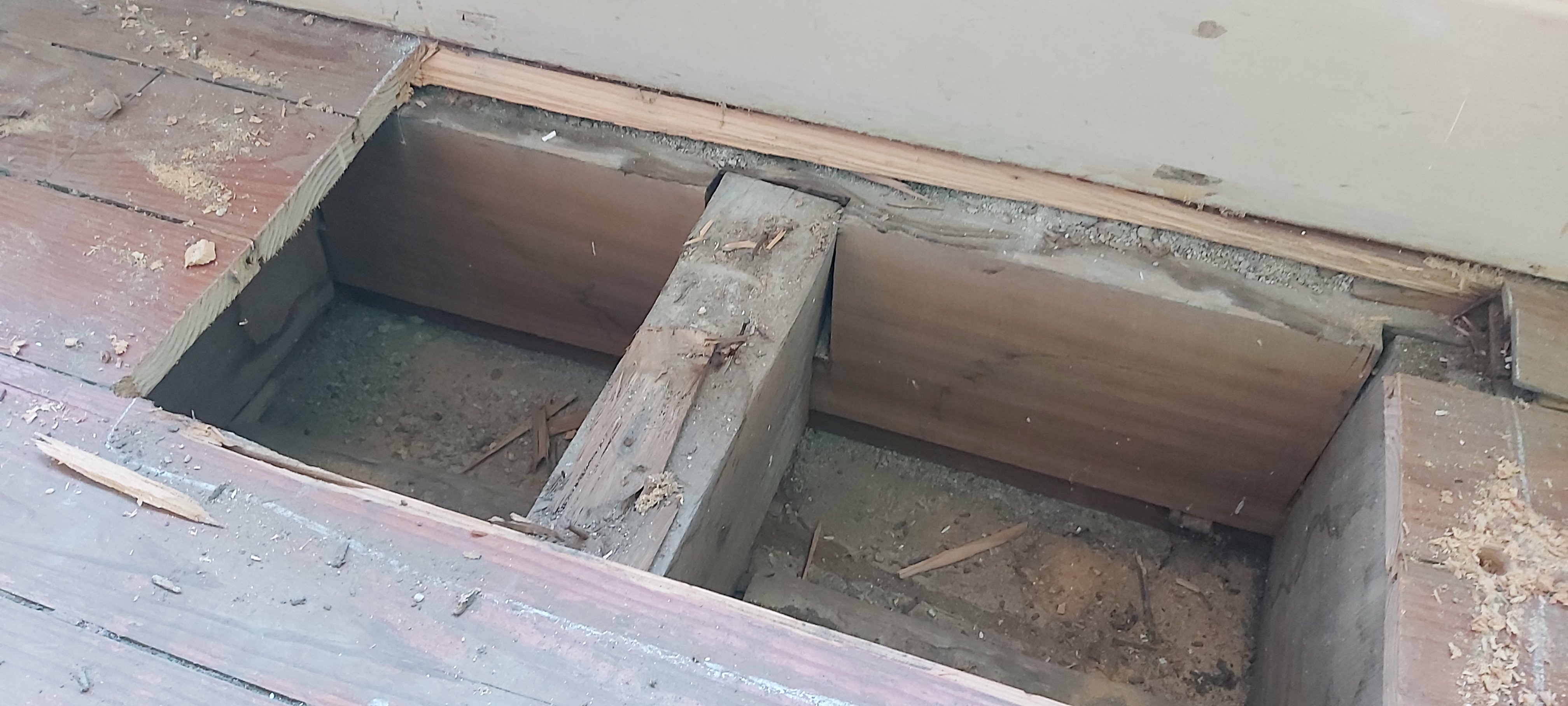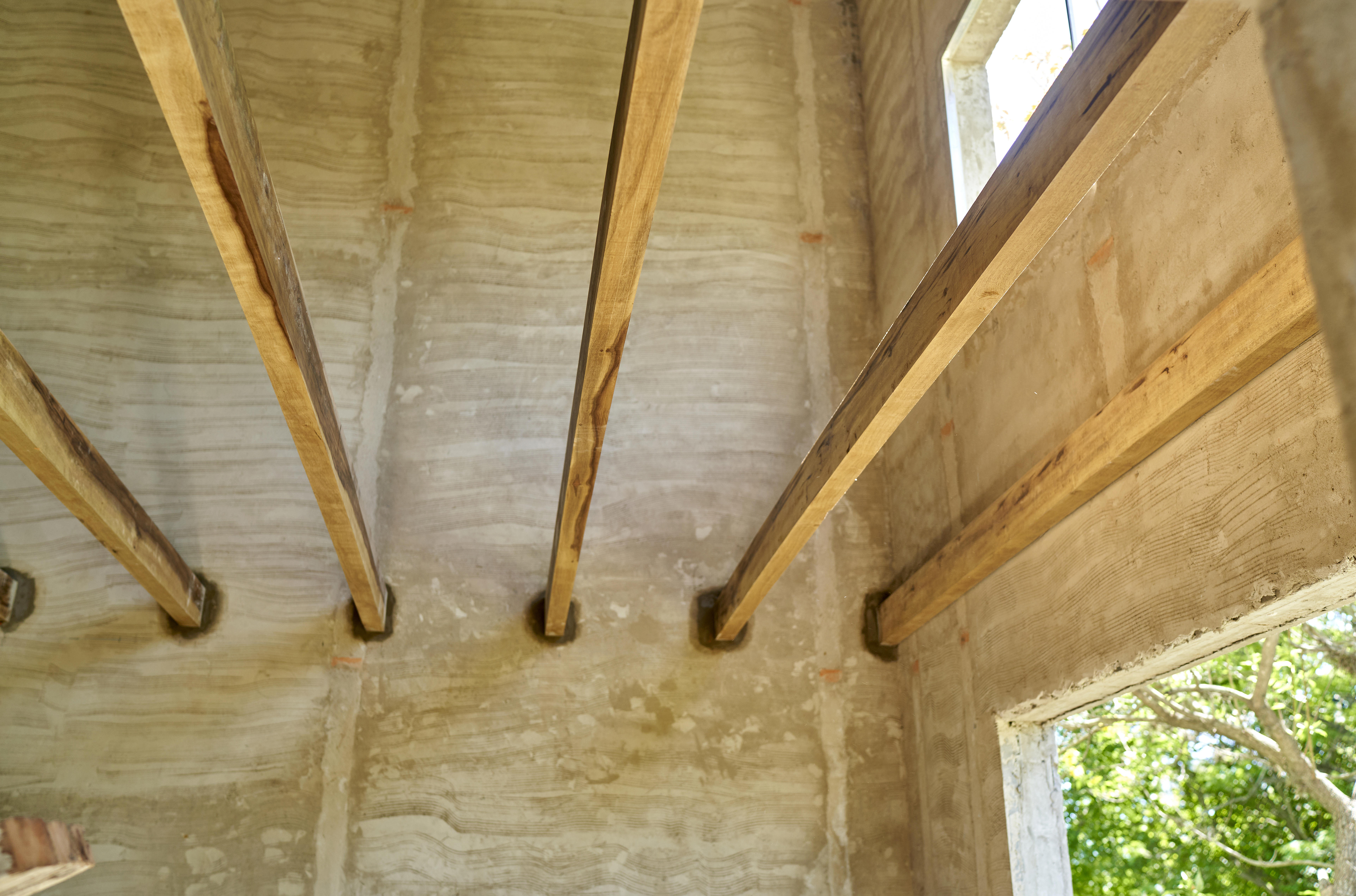
Curious how much general contractors charge per hour? Discover hourly rates, key cost factors, and tips to save on your next home project.
Every step you take, every move you make, relies on sturdy floor framing


The different parts of floor framing support the weight of a structure.
Important floor framing parts include joists, partitions, sills, and beams.
When floor framing has damage, you might notice bouncy or sagging floors.
Many repairs for floor framing require the skills of a professional framing contractor.
When learning how to frame a house or build a home addition over a foundation, the success of your project starts with a sturdy base. Framing the floor correctly is a key house framing basic step necessary to provide load support for the structure and to keep it square. Understanding the parts of floor framing can help you spot potential problems that will require repairs. Learn more about how each part functions and what you need to do to maintain it.

When framing a house, builders create structural support vertically over the foundation, including floors, walls, and the roof. Following proper framing techniques ensures the home is structurally sound and built to last.
As construction of your structure starts, you should pay significant attention to your floor framing. The floor framing is a vital component, as it provides the base and stability for the remainder of the framing steps. Once you cover the floor framing with subflooring, though, you might forget about it and focus on the walls and roof.
It’s smart to occasionally check the condition of the floor framing in future years, ensuring all the components remain square, tightened, and in good shape. After all, this is one of the key parts of a house that keeps your structure standing strong. You can inspect most of the parts of the floor framing from inside the basement or through a crawl space.

The sill is a piece of pressure-treated wood that lies horizontally on top of the perimeter of the foundation. Builders will bolt it to the foundation and then use it as the base for attaching the rim joists. The sill transfers load from the floor to the foundation.
Sills may rot if exposed to constant moisture for several years. If needed, contractors would have to raise the house and support its weight with another option. Frequently, builders will replace the sill and rebuild the foundation at the same time.
The rim joist is the pressure-treated wood piece of the floor framing that creates the perimeter of the framing. The rim joist lays on end and is perpendicular to the joists to provide lateral support to them. Contractors nail the rim joist to the sill.
Because the rim joist serves as the perimeter of the floor framing, it receives more exposure to moisture and problems like insects than other parts of the floor framing. It could suffer rot, insect damage, or mold growth that degrades the wood. If the rim joist needs replacement, contractors would have to support the weight of the structure with columns or jacks to gain access to the rim joist.

The beam is a larger piece of wood (or multiple pieces connected to each other) that serves as a horizontal member. When the joists need to support a space between the rim joists that’s too long, contractors could insert a beam in the middle to provide extra support. Contractors would connect the joists to the beam and the rim joist.
When considering a joist versus beam, the beam is thicker and serves as a major weight-bearing piece. Joists perpendicularly connect to the beam, using it for support.
Although it’s not common, a beam could crack or sag over time from age or if it’s not large enough to support the weight of the floor and structure. Contractors would have to support the weight of the structure with temporary columns or posts while replacing a damaged beam.
The joist is a horizontal piece of wood standing on its long edge that stretches from one side of the floor framing to the other, connecting to the rim joists or beams. Multiple joists are part of floor framing, as they distribute the weight of the entire structure.
Contractors may install joists every 16 or 24 inches on center, although 16 inches is more common. Joists often consist of pressure-treated wood, but not always.
Joists can be damaged by water or insects. They might crack or sag under excess load from the structure or heavy items sitting above them. Some people might cut into joists while installing plumbing or electrical wiring. If someone cuts away too much wood, it can weaken them.
If a joist has some damage, you or a contractor likely would repair the damaged section by sistering it. This technique involves adding a fresh piece of wood that spans the damaged section and connects to the healthy sections of the joist on either side of the damage, providing support.
If the entire joist has damage and requires a full replacement, a contractor might need to use a small jack to raise the subfloor slightly to remove the damaged joist and insert the new one.
The double trimmer is two trimmer joists used to provide extra support to the floor framing around an opening, such as for a stairway.
To create a floor opening, you’d have to cut out part of the joist span, so the double trimmer takes over some of the load that the missing section of the joist would normally support. The double trimmer may extend the entire length of the frame to deliver the necessary load support.
Like other parts of floor framing, the double trimmer could end up with water or insect damage. Similar to repairing joists, most contractors will sister the double trimmer to support any damaged areas.
A tail joist is a small section of wood that runs from a double trimmer to the rim joist or beam. When you need an opening inside the floor framing, tail joists provide support for the floor framing in the spot where the full joist would normally be.
Tail joists could be damaged by water or insects. Sistering is the most common way to repair them by providing support across the damaged section.

A joist hanger is a metal piece used in floor framing that supports the connection from joists, double trimmers, or tail joists to beams or rim joists. You’ll see the metal pieces where these two pieces of wood meet. The hanger may have a U- or L-shape, and you’d screw the hanger into both pieces of wood.
Although joist hangers can support a lot of stress and weight, they can bend over time. Screws connecting them to the wood might come loose or bend under stress.
If you notice damage to joist hangers or its screws, you can tighten or replace them yourself most of the time. If you see a joist that’s damaged or slightly out of place because of a damaged joist hanger, you might need the help of a contractor to realign and fix the joist before reattaching the joist hanger.
If your floor framing must support a partition wall in the structure, you’ll use extra wood that’s part of the floor framing and goes directly under the location of the partition wall.
Because partition walls are not load-bearing, they don’t require heavy-duty framing. Contractors may support them with double joists in the floor framing. These double joists could suffer water or insect damage, just like double trimmers or regular joists. Sistering is the most common way to repair damage here.
Header joists and double headers are parts of the floor framing that extend beyond the perimeter of the main floor framing and foundation. You might use headers for a bay window or covered porch, for example. These headers consist of one or two boards to support the part of the structure extending outside the foundation.
Because these wood pieces are along the exterior of the framing, they’ll be more exposed to moisture or insect damage. To replace damage in these areas, a contractor might need to use columns or jacks to support the structure outside the foundation. After removing the damaged header joist or double header, the contractor would put in the new wood and remove the jacks.
As a typical homeowner, your primary maintenance goals will involve performing occasional inspections of the parts of the floor framing. You can go into an unfinished basement or crawl space and inspect the joists and other parts of the framing underneath the main flooring. If you have a finished basement, go into a closet, utility room, or laundry room, which are areas that might not have a finished ceiling.
If you notice sagging floors on the main floor of the house or if you feel the floor “bouncing” as you walk across it, inspect the floor framing under those areas of weakness. Look for problems like:
Sagging joists
Cracked joists
Loose joists
Out-of-position joists
Joists with holes or notches cut into them
Moisture or mold damage on the wood
Signs of rot
Signs of insect or termite damage
Loose joist hangers, bolts, and screws
Pay special attention to areas underneath sinks, toilets, dishwashers, washing machines, and other potential sources of water leaks. If certain parts of the floor framing have frequent moisture exposure, bring ventilation, dehumidifiers, and fans into the area.
If you need to frame a new floor or notice damage in any of the parts of your current floor framing, you might consider doing the work yourself. However, any new framing projects or major repairs should involve the help of a local framing contractor. In some municipalities, you might not be able to do this work yourself under local building codes. You might need permits, too, necessitating help from a professional contractor.
Understand that major repairs or termite damage repairs to the floor joists will be an extensive and pricey process. The average floor joist repair cost can reach several thousand dollars or more, while a sagging floor repair cost can be $5,000 or more for major repairs. Trying to replace or repair cracked or damaged floor joists yourself is going to be a major challenge. Instead, you should hire a pro to fix a cracked floor joist.
If your floor framing begins to fail or fall apart, your home’s structure could be in danger. If you aren’t sure whether you’re seeing major damage, let a professional framing contractor inspect the material and suggest which types of repairs are necessary.
From average costs to expert advice, get all the answers you need to get your job done.

Curious how much general contractors charge per hour? Discover hourly rates, key cost factors, and tips to save on your next home project.

Winterizing a house depends on its type, size, location, and more. Our guide breaks down how much it costs to winterize a home.

Looking to turn your yard into a hockey or ice skating paradise this winter? Use this backyard ice rink cost guide to see what the installation will total.

Not sure what the difference is between coffered and tray ceilings? Learn the key distinctions in design, cost, and benefits to decide which ceiling style is best for your home.

Learn what’s possible and what your options might be when considering ways of raising the ceiling height in a room or your entire house.

To make your home project stress-free, we’ve compiled a list of 12 questions to ask your contractor during every stage, from first contact to project wrap-up.